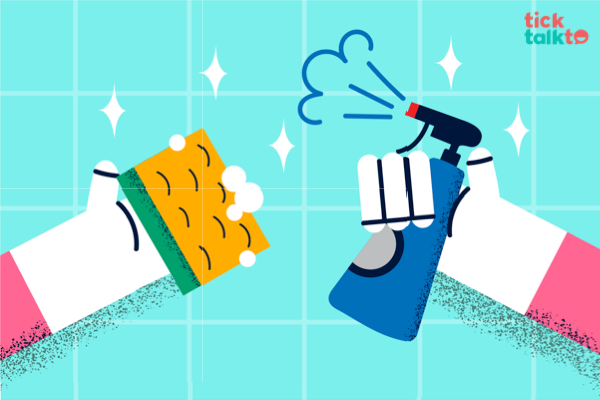Obsessive Compulsive Disorder (OCD) Meaning
OCD or Obsessive Compulsive Disorder affects your mind – causing unwanted sensations or thoughts. It urges you to do an action repeatedly. Most people suffer from compulsion and obsession in OCD.
It can start with a simple thought that can drive people to do something again – and again. These repetitive thoughts or actions can interfere with daily activities and social interactions.
Also, OCD is a mental disorder that affects people of all types and ages. A person suffering from OCD gets caught in the web of thoughts and obsessions. And these obsessions can be intrusive, unwanted, or may trigger distressing feelings.
Contrary to the belief, OCD is not about negative emotions or biting nails. Instead, the habits may include – washing your hands many times a day and cleaning something again and again. All the thoughts are persistent for a person with OCD, and their behavior is rigid. And, not performing the behavior causes stress. Even if the thoughts are not realistic – a person with OCD might face difficulty stopping compulsive action or disengaging in obsessive thoughts.
OCPD – Obsessive-Compulsive Personality Disorder
The condition is characterized by an invasive obsession with perfectionism and control that slows down a task. Therefore, a person with OCPD needs to impose their standards on their outside setting.
People with the condition can be distinguished by;
- Find hard to express their inner state or feelings
- Hardworking but their obsession can take a toll on them
- Find it difficult to maintain close relationships with others
- They are often fussy and angry and in a huff
- They might face social isolation because of behavioral shift
- They might suffer from anxiety attacks with depression
Most people with OCPD have no idea about how they behave or act. They believe that what they do is correct – and what others say is wrong. About 2 to 7 percent of the general population is estimated to have OCPD. It is more common in men than women. Moreover, OCPD may occur in most families – so genes may be involved.
Anankastic Personality Disorder
In Anankastic Personality Disorder, a person has an extreme preoccupation with orderliness. It focuses more on interpersonal control and perfectionism. At times, due to efficiency and flexibility.
Unlike other personality disorders – the disorder has an early onset and is stable over time. However, its functioning may result in impairment and distress.
Anakastic Personality Disorder affects more than 23% of the clinical population – but it is still an under-researched and under-diagnosed disorder. In addition, the categorical model of APD has been criticized – as it lacks proper diagnostic validity. Most studies emphasize that the personality traits of the condition are dimensional rather than categorical. Besides, there is the heterogeneity of OCPD and high comorbidity of PD in general.
Obsessive Compulsive Disorder (OCD) Signs and Symptoms
Symptoms of OCD can be categorized into obsession and compulsions.
Obsessive behavior symptoms in OCD
Obsessive thoughts can vary depending on the condition – but the most common symptoms of Obsessive-Compulsive Disorder are:
- Worrying about dirt or germs
- Fear of harming yourself
- Fear of saying something obscene
- Need to have all the things organized and systematic
- Explicit or sexual thoughts
- Fear of throwing away things
- Questioning sexual orientation
- Worrying about the health of loved ones
- Flashes of intrusive images or sounds
The persistence to above thoughts leads to stronger certainty that they might come true.
Compulsive behavior symptoms in OCD
Compulsions are a response to obsessions. You might be compelled to take any action to relieve stress. Common compulsive behaviours in OCD are:
- Washing hands or objects repeatedly
- Repeating specific phrases
- Touching something many times
- Constantly seeking reassurance
- Collecting some things or buying similar items
- Hiding objects that could hurt
- Mentally recollecting your actions in the mind
ICD – 10 diagnostic criteria is – when the symptoms are present for more than two weeks – and can be a source of distress.
A DSM 5 diagnostic criterion is – when there is the presence of obsession and compulsion both.
Obsessive Compulsive Disorder (OCD) Diagnosis
There are four main criteria to diagnose Obsessive Compulsive Disorder:
- Diagnostic Criteria: The doctor may use this criterion in the DSM – 5 (diagnostic and statistical manual disorders). The benchmark is published – by the American Psychiatric Association.
- Psychological Evaluation: The doctor will discuss your thoughts, signs, behavior patterns to determine if you have Obsessive or Compulsive behavior that interferes with your routine life. In most cases, the doctors may talk to family or friends.
- Physical Examination: This rules out the problems that cause other symptoms and checks for related complications.
- OCI-R assessment1 is a psychometrically and valid self-report that measures symptoms like – washing, checking, ordering, obsessing, hoarding, and neutralizing. You can take this assessment on the TickTalkTo app.
Causes of Obsessive Compulsive Disorder (OCD)
OCD appears to be genetic in most cases. Genes affect how your brain responds to neurotransmitters Serotonin and Dopamine.
Another study suggests that the person with OCD learns to avoid fear associated with some situations performing rituals to reduce risk. The initial fear begins with a traumatic event or significant loss. Once the person associates the circumstances with fear, he tends to avoid the situation that characterizes OCD.
OCD may also start when people misinterpret their thoughts. And the intrusive thoughts become extreme or intense with time. Finally, a person with OCD becomes convinced that the action is about the happen. And in response to the situation, they take action to prevent danger.
At times, stressful life events also trigger OCD due to predisposition or otherwise. Most people have reported the symptoms of OCD due to circumstances like – childbirth, complications during pregnancy, conflict, serious illness, and traumatic brain injury.
Autoimmune related causes
Symptoms of OCD may well appear in children after an infection like;
- Lyme disease
- Streptococcal infection
- H1N1 flu virus
Clinicians call these symptoms – Pediatric Acute-onset Neuropsychiatric Syndrome (PANS)2. In this case, the symptoms may start suddenly and reach full intensity within two or three days. However, they might disappear after a while – depending on the cause.
Treatment for Obsessive Compulsive Disorder (OCD)
Obsessive-Compulsive Disorder treatment may not result in a cure – but will help to reduce the symptoms. A clinical professional who is adept in mental illness can offer treatments like:
- Cognitive-Behavioral Therapy – will help you understand your emotions and thoughts. Talking to a therapist may help – as it may stop your negative habits.
- Some therapists prescribe Medicines like – Serotonin reuptake inhibitors (SRIs), Tricyclic antidepressants, and Selective SRIs (SSRIs). These medicines increase the serotonin levels in the body.
- Exposure and response prevention (EX/RP) – prevents you from responding with compulsion.
Online counselling and therapy for Obsessive Compulsive Disorder (OCD)
The treatment for OCD has become more accessible with online counselling and therapy services. There are many websites which can provide you access to e-therapy from the comfort of your home.
Best psychologists and psychiatrists for OCD treatment are available on the TickTalkTo App. You can easily connect with them and start your treatment for OCD. Success of therapy depends on your commitment. It is important to trust the process since therapy is a long-term treatment and the progress is gradual. Remember, things can get better with treatment. Don’t delay seeking help.

 Mridula Sharma
Mridula Sharma


